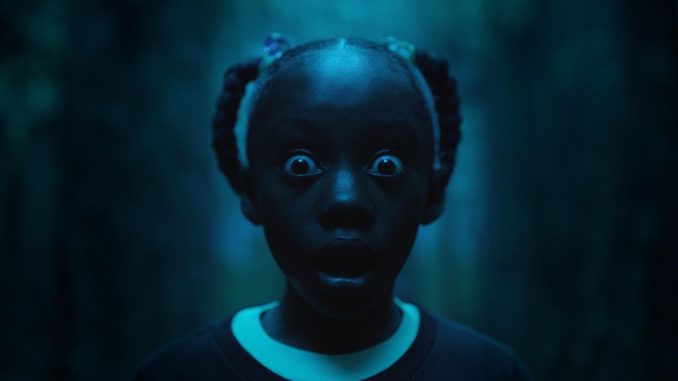
by A.J. Catoline
Among the brainy quotes seen on inspirational posters, there is Hellen Keller’s advice: “We can do anything we want to if we stick to it long enough.”
Perhaps the comedian and writer Jordan Peele, now also a director and producer, followed this advice when he stuck to his outlandish and boundary-pushing brand that evolved over five seasons of the television comedy Key & Peele (2012-2015) with his sidekick Keegan-Michael Key. The sketches went long-form with their first feature film Keanu (2016), co-written by Peele. He followed with his directorial debut, Get Out (2017), for which he won the Oscar for Best Screenplay for capturing the horror of racism while masterfully remaining inside his lane of subversive, dark comedy.

And now Peele is back with his horror film Us, which opened March 22 through Universal Pictures. The film flips the old trope of a zombie invasion on its head by using political themes of the other, the counter-culture, the have-nots who rise up against the privileged. The story is psychologically terrifying, and just when you think you know what you’re watching, it flips. Again, Peele goes to his wacky wheelhouse as these doppelgängers tethered to the underworld are literally home-invading rich people in their vacation homes and on their boats.
Also appreciating the idea of sticking to it would be the film’s editor Nicholas Monsour, who first got to cut Peele’s quirky comedy back in the early days of the breakout sketch show. Monsour continued assembling the absurd material — such as an adorable, wide-eyed, lost kitten finding itself in the center of a gang war, cutely dodging bullets and explosions — when he went on to edit Keanu.
Peele evidently trusts his editor’s instincts and has stuck with their collaboration in the cutting room for Us. Monsour is also editing Peele’s reboot of The Twilight Zone series, which Premiered on CBS April 1. CineMontage sat down with the editor to ask how the pieces of surrealist humor from this multi-layered comedian-provocateur-writer-producer-director are assembled on screen.
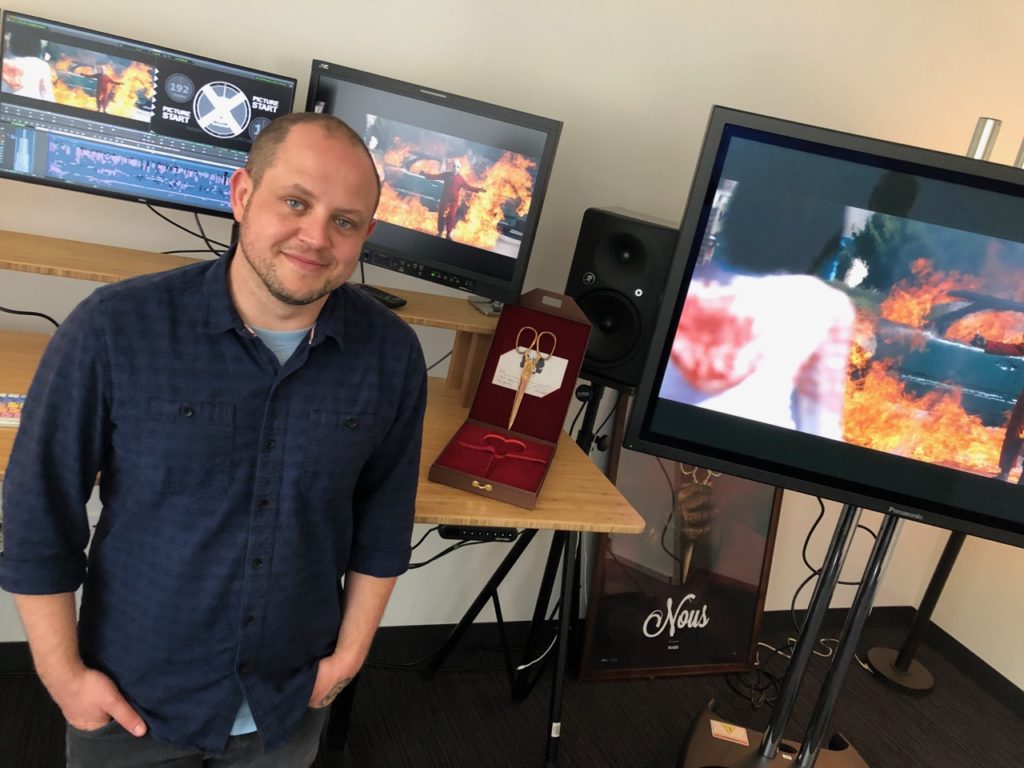
CineMontage: How did you first come to work with Jordan Peele?
Nicholas Monsour: I met Jordan on Key & Peele. I certainly didn’t know at the time that job would lead to other jobs. I had done only two TV shows and had just joined the Editors Guild. It was basically a sketch-a-day of many different genres. Our producer would ask, “Who wants to cut the cop procedural sketch? Who wants the Michael Mann movie parody? The horror movie? The slapstick comedy?” And Director Peter Atencio gave us such a variety of material. I always thought of Peter as the ampersand in Key & Peele. He’s an incredible director. [Atencio directed Keanu, also edited by Monsour.]
For example, I never had done a barbarian war spoof, but they went out and filmed a real barbarian war sequence that felt like it was from a historical drama. Before I was an editor, I was into experimental film and loved to watch movies. I said, “I’ve watched those type of films; I think I would know how to cut that to be funny and exciting.” We could be doing a sketch about a guy farting while at the tailor while talking about ancient philosophy. Jordan loved experimenting with many layers of comedy.
CM: You have cut both comedy and horror. Are the two genres similar in pacing and the use of reactions for jokes or tension?
NM: There are established patterns in comedy and horror of which you have to be aware. You want to communicate to the audience that you know the grammar of what they are familiar with, and then mess with that in a new way. The goal is to communicate to a viewer that this is not going fit into something they have seen before.
CM: How long did it take you to do the editors cut for Us?
NM: The production was 42 shooting days over 10 weeks. I did not want Jordan to spend his director’s cut time creating a watchable cut. I wanted him to spend that time delving in to the deeper levels. I think about four days after they wrapped, we watched a cut that included temporary score and presented ideas for sound work.
Jordan is happy to let me do a first pass, where my dark secret is that I kind of ignore script notes. I like to look at the shots coming in and think, “What can I make with this?” Sometimes it’s very clear that a shot is intended to open a scene. The camera move lets you know. Other times, you flip the order of a scene on its head and find a new way in. That’s where I find the most exciting discoveries. I think Jordan appreciates that fresh perspective — and he would have no problem telling me if I’ve missed the mark. Of course, I go back and review the script notes, look at which takes are marked as favorites and make that version or integrate it into the cut.
CM: Why was the cutting room not located on the studio lot?
NM: We moved the cutting room into a private, rented house up Beachwood Canyon. We wired the rooms to connect our Avids. We had talked about the best setup for editing and Jordan wanted to have a space dedicated to the project. We felt like we were in our own bubble. You do sacrifice a bit of convenience at the end when we had to run from the house to the soundstage. And we had a comfortable room so Jordan could invite friends to screen cuts.
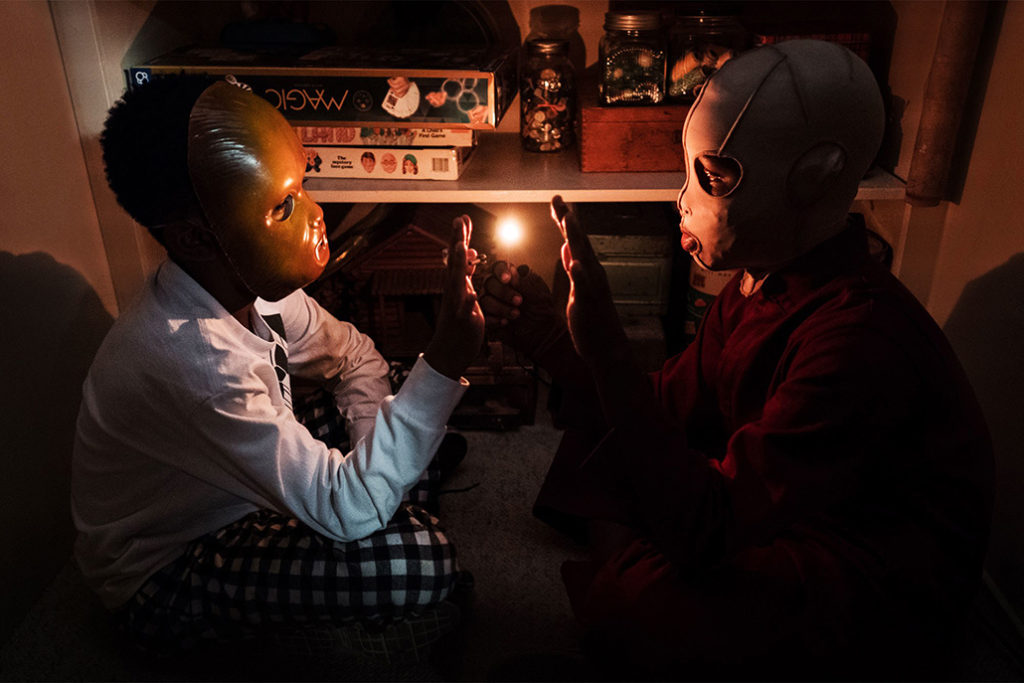
CM: The film intercuts between the story lines of different characters. Was this as scripted or were the spots to intercut discovered in the edit?
NM: Things did change from the script. There are a lot of non-verbal sequences in the movie. For instance, the script describes action in a quarter-page, yet when they shot, it became a captivating two-minute sequence. If we realized the moment no longer feels right rhythmically in the spot where it was written, I would try different structures. Where we ended up was nothing radically different from what Jordan had written. Small and subtle shifts can have big effects in terms of losing or keeping an audience.
I had the benefit of working with a writer-director-producer. Jordan was cutting and rewriting as they were shooting. The story was so rich it felt like it could have been adapted from a book. In this case, I got to sit in the room with the person who thought up the original idea. It was an amazing experience.
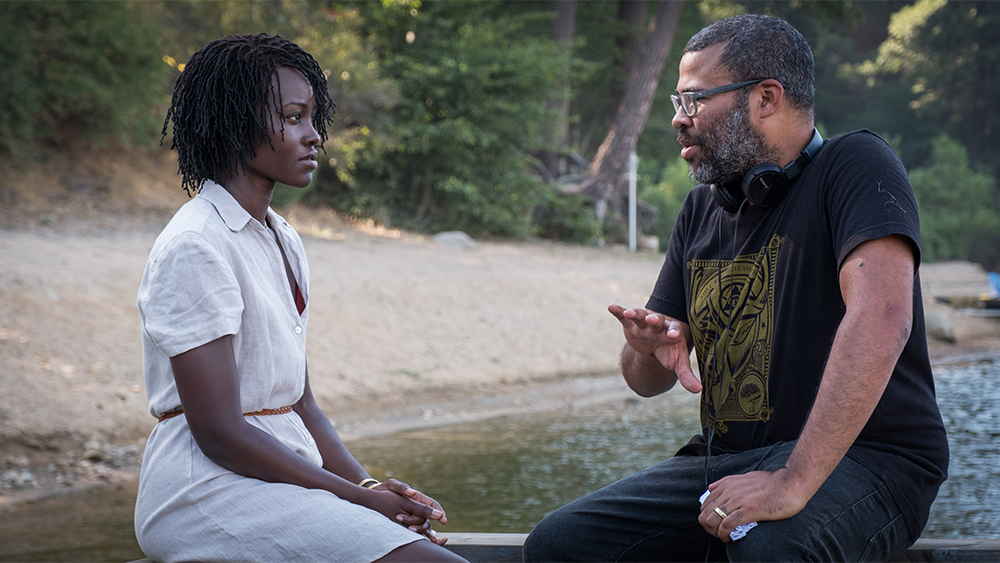
CM: As one actor plays two characters in both sides of a scene, was it a challenge that only one side could be shot at a time? You had to make initial cuts with only one side?
NM: Lupita Nyong’o [who played both Adelaide Wilson and her doppelgänger Red] did something I’ve never seen an actor do, which was to sort of pre-direct each scene with Jordan. They worked so closely to prepare the invisible half of the scene before they shot it. Sometimes it was shot days later. They rehearsed so Lupita could know what she was going to do in advance on the other side. It was an amazing act of imagination that they pulled off. They had to track not one complicated character’s journey, but two.
The story is neither told nor shot chronologically. I would love to say it was a huge challenge and I needed to solve tons of problems in the edit, but I didn’t, really, because they had prepared and shot it so well. I’ve been half-joking that Lupita should get two Oscars for her performance of each character. I’m not sure if they do that…
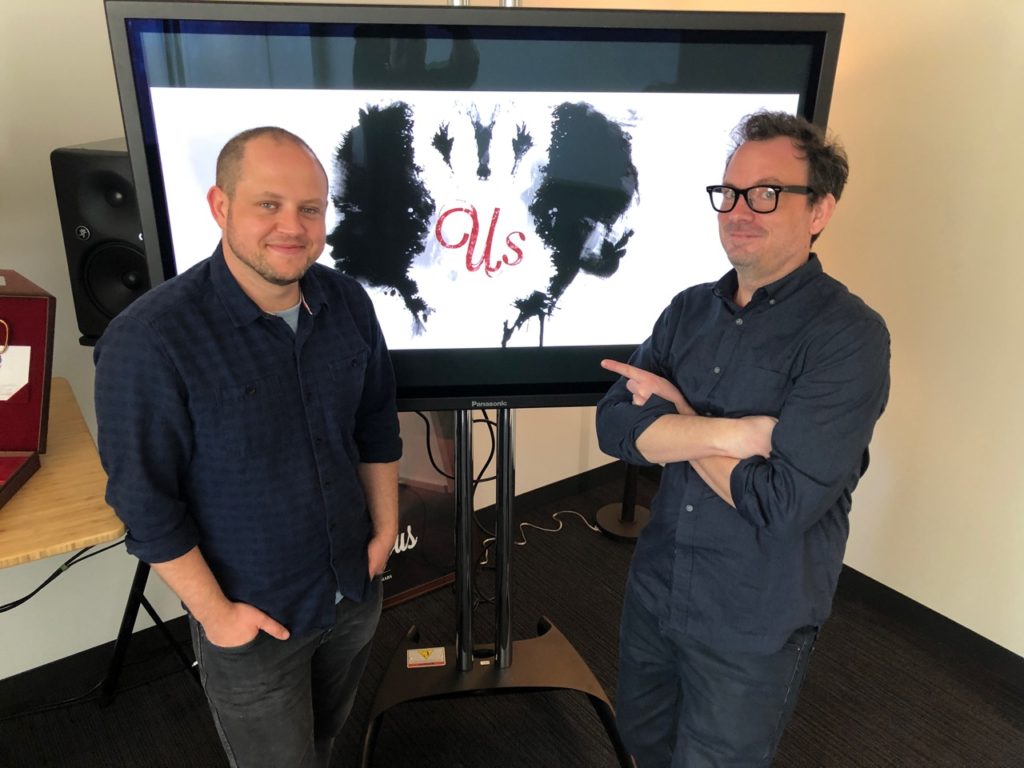
During shooting, it sometimes was important for Jordan to see a cut the next day to inform how he would shoot the other side of the scene. My assistant editor, Matt Absher, was crucial to help me communicate with the production team. He was constantly updating a board to track each day’s shoot so I could keep an eye ahead and realize that if I take three days cutting this scene, I would be in trouble next week! Other times, Jordan wouldn’t get a cut from me for days. On the first pass of the ending dance/fight sequence, I told him this is going to take me a minute to do right, and I would rather start from somewhere solid rather than rush a rough assembly. Jordan gives me that freedom. And I trust his instincts implicitly.
CM: Did you include sound effects and music in the picture edit to build fear and tension? Did you work with the composer and music editor?
NM: Jordan has a very close relationship with composer Michael Abels. He worked with him on Get Out along with the music editor Brett “Snacky” Pierce. Michael was writing music before they shot a frame. I had many demos and test tracks coming over from Michael that gave me insight into what he and Jordan were imagining. Music communicates ideas that cannot easily be explained verbally. I love working with composers if I have that opportunity. Michael and I would talk every week about what we discovered in the edit. The music editor sent audio stems so we could adjust his compositions. It felt more organic to change picture with the music than the traditional method to say we’ve made this picture cut to be scored. This workflow helped us in getting the feeling and the rhythm how Jordan wanted it.
The songs used in the film — including Good Vibrations [the Beach Boys] and Fuck tha Police [NWA] — were a huge part of key scenes. [Spoiler alert: the doppelgängers invade a family as they are listening to their Alexa-like stereo device.] My job was to make sure the moments in the dailies were lining up with the song in the way he wanted. Our re-recording mixer Ron Bartlett went home and recorded those songs playing over his living room stereo to give it a three-dimensional space. I really appreciate those details from the sound team.
CM: How did you edit the end sequence, which was masterfully spliced with quick intercuts? It played like an experimental short film.
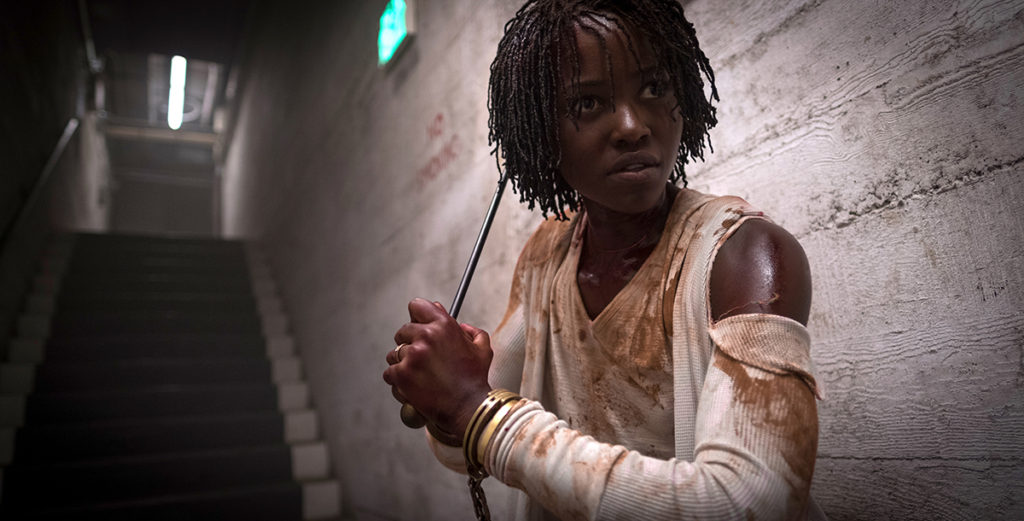
NM: I’ve never had more fun editing anything than the end sequence of this movie. I had the opportunity to push the cut rhythmically, musically, emotionally, psychologically and viscerally. I think my background of working on dance films, experimental theatre and video art gave me some of the tools and techniques needed to cut this sequence. This combined with the weight of the world of these characters that the film had flushed out, and the social implications behind their story. I felt I used every part of my brain and the experience I had as an editor. Anytime we had the opportunity, I would go into this sequence and keep trying to find what served it the best.
CM: Did you wow Peele when he first saw the sequence?
NM: I hope so. Jordan is so open to see where I start with a cut even if it ends up nowhere near there. That sequence demanded to be cut on its own terms. And as we got closer to the final edit, it became a matter of judging how the sequence felt at the film’s end. The material I got to mess with was so insane, so richly layered, and well thought-out. And I’m glad I didn’t f— it up!


